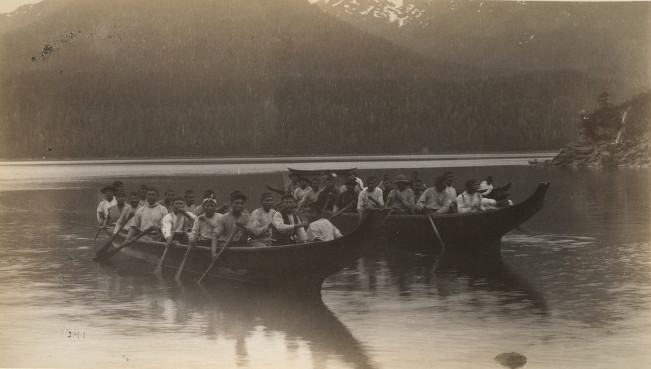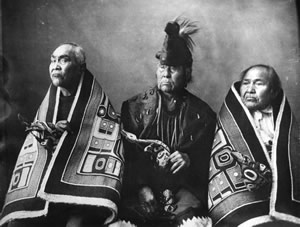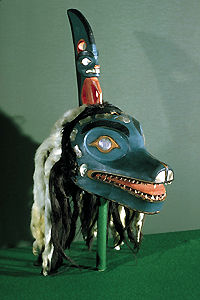EPISODE 688 ESCAPE FROM THE YUKON PART 8 WHERE DID THE TLINGIT PEOPLE COME FROM 11,000 YEARS AGO?
alan skeoch
dec. 1, 2022
Tlingit girls, circa 1900


upload.wikimedia.org/wikipedia/commons/a/af/Taku.jpg 2x” data-file-width=”485″ data-file-height=”599″ class=””>
Tlingit Canoes in Alaska, 1887…Did the Tinglits paddle there way to North America? Or walk? No one knows.
SKAGWAY, HAINES JUNCTION, TREADWELL, JUNEAU… ‘TLINGIT’ TERRITORY
Several of the Treadwell miners In 1917 were First Nations people…Likely Tlingits.
Who are the Tlingit people? No one really knows their origin. But there are two schools of thought.
The first is fairly well known. Eleven thousand years ago much of the world’s water had become ice
A huge sheet of ice covered much of North America. But not all of North America. Vast amounts of water
was stored in the Arctic and Antarctic ice caps.
“During the last glaciation 18,000 years ago sea levels were 120 metres (394 feet) lower than today.”
(Brian Fagan, THE COMPLETE ICE AGE, How climate Shaped the World, P.76) Climate changes
not new. The difference is the speed of climate change due to human intervention. In the last 100,00
or so years there have been five Ice Ages and five Warm ages. As ice melts, oceans get deeper. As ice forms
oceans get shallower.
What is now the Bering Sea was a land bridge joining Asia to North America. It is believed that
Asiatic human beings crossed this land bridge at various times and settled in various locations.
The First Nations. Why? Because animals such as Hairy Mammoths and others had already made the
crossing and humans were hunter gatherers. A hairy mammoth could make a fine and lasting meal.
This theory believes humans, like the Tlingit, ‘walked’ across the Bering land bridge. It makes sense.
There is another theory, however, that also makes sense. Eleven thousand years ago a small group of
people paddled their way from island to island, from headland to headland…from the South Pacific
to North America. Polynesians. They found the food sources available in the Alaskan panhandle plentiful. So
they settled themselves on the islands and the mainland from Skagway to Juneau.
As our climate warmed the sheets of ice melted, the sea got deeper and what was shoreline
in the last ice age changed. Evidence of the movement of stone age people who came to North
America by sea was obliterated.
Tlingits are different than other native people; Or are they?



 upload.wikimedia.org/wikipedia/commons/thumb/a/a2/Tlingit-map.png/440px-Tlingit-map.png 2x” data-file-width=”637″ data-file-height=”1057″>
upload.wikimedia.org/wikipedia/commons/thumb/a/a2/Tlingit-map.png/440px-Tlingit-map.png 2x” data-file-width=”637″ data-file-height=”1057″>
EARLY HISTORY
The name Tlingit essentially means human beings. The word was originally used simply to distinguish a human being from an animal, since Tlingits believed that there was little difference between humans and animals. Over time the word came to be a national name. It is speculated that human occupation of southeast Alaska occurred 11,000 years ago by Tlingit people. Haida people, with whom the Tlingit have frequent interaction, have only been in the area about 200 years, and the Tsimpsian migrated only recently from the Canadian interior mainland.
Tlingit legends speak of migrations into the area from several possible directions, either from the north as a possible result of the Bering Sea land bridge, or from the southwest, after a maritime journey from the Polynesian islands across the Pacific. Oral traditions hold that the Tlingit came from the head of the rivers. As one story goes, Nass-aa-geyeil’ (Raven from the head of the Nass River) brought light and stars and moon to the world. The Tlingit are unique and unrelated to other tribes around them. They have no linguistic relationship to any other language except for a vague similarity to the Athabaskan language. They also share some cultural similarity with the Athabaskan, with whom the Tlingit have interacted and traded for centuries. There may also be a connection between the Haida and the Tlingit, but this issue is debated. Essentially, the origin of the Tlingit is unknown.
NOTE No one really knows where the Tlingits originated. Was the Pacific Ocean sprinkled with more islands 11000 years ago? Was island hopping easier?
Even with today’s DNA testing, the origin of the Tlingit people is not certain. It is generally accepted they came from the Eastern Hemisphere across the Bering Strait and down into Southeastern Alaska. Some believe the ancient imigration by-passed the glacier-choked panhandle and instead populated parts of California and the Lower 48, even as far south as South America and then returned later when the ice had receded. Others believe some of these ancient travelers remained to settle this area.
The pre-contact native population of the Pacific Northwest Coast is also difficult to determine. Successive epidemics of measles and smallpox took their toll on native villages, sometimes leaving only one or two survivors. There is no way to determine exactly how many lives were lost due to these new diseases, but it appears that there was a great decline in population in the first half of the nineteenth century.
The ocean provided not only food, but also a transportation corridor. Highly skilled navigators with seaworthy canoes, the Tlingit thought nothing of paddling for days in any direction. The Chilkats and Chilkoots also had overland routes to the interior. A great trade empire was established from interior Alaska/Canada south to northern California. In the Americas, this trade empire was rivaled in size only by the Incas.
(William M. Olson, The Tlingit, An Introduction to their culture and history, 1997
POPOLATION
According to the 2o16 census there are 2110 Tlingit people most of them living in Haines Junction, Alaska, First contact with
Europeans the population was estimated. Not large.
Tlingit dance hat. circa 1850
(National Museum of Canada)
alan skeoch
dec. 2,2022
NEXT: EPISODE 689 ESCAPE FROM THE YUKON 1961: GORDON LIGHTFOOT “IN THE EARLY MORNING RAIN”


 upload.wikimedia.org/wikipedia/commons/a/af/Taku.jpg 2x” data-file-width=”485″ data-file-height=”599″ class=””>
upload.wikimedia.org/wikipedia/commons/a/af/Taku.jpg 2x” data-file-width=”485″ data-file-height=”599″ class=””>


 upload.wikimedia.org/wikipedia/commons/thumb/a/a2/Tlingit-map.png/440px-Tlingit-map.png 2x” data-file-width=”637″ data-file-height=”1057″>
upload.wikimedia.org/wikipedia/commons/thumb/a/a2/Tlingit-map.png/440px-Tlingit-map.png 2x” data-file-width=”637″ data-file-height=”1057″>
